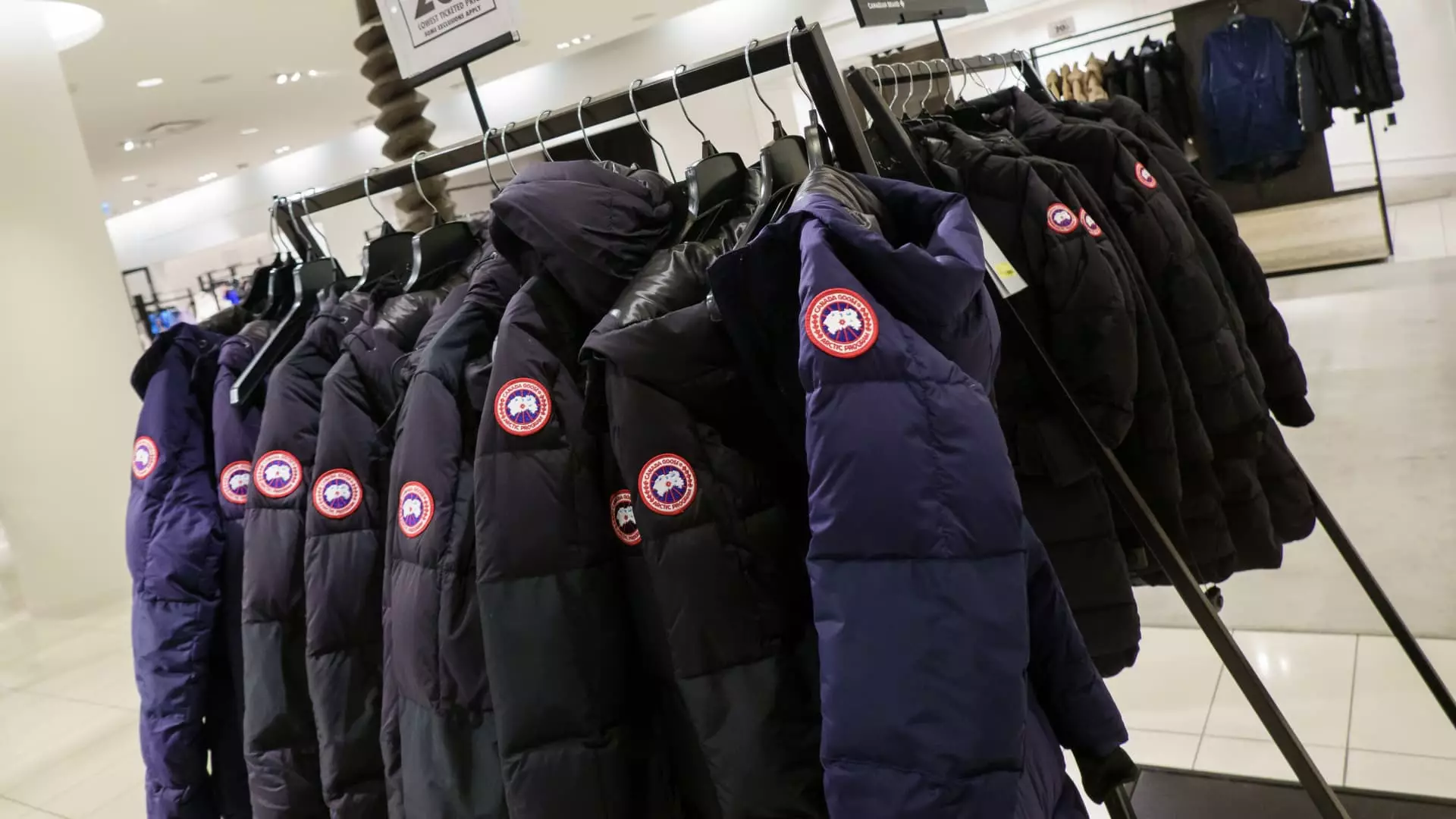In an unexpected twist that seems all too common in today’s fractured economy, Canada Goose has seen its shares skyrocket by over 20% after the release of fourth-quarter earnings. The numbers were undeniably impressive: earnings per share at 33 Canadian cents, surpassing expectations, and revenue of CA$384.6 million standing in stark contrast to the anticipated CA$356.4 million. However, what lies beneath the surface of this apparent triumph is a conundrum: the company has refrained from issuing a financial outlook for fiscal 2026, citing “macroeconomic uncertainty.” This paradox brings into question whether the enthusiasm surrounding Canada Goose is warranted or merely a mirage in an unpredictable desert of luxury consumerism.
The Elephant in the Room: Economic Uncertainty
While Canada Goose celebrates its short-term successes, the backdrop of economic unpredictability looms larger than ever. The company’s acknowledgment of “dynamic consumer spending patterns” hints at a growing concern among affluent consumers who are not immune to the global economic headwinds. The luxury market, particularly, is notorious for its volatility; high-end brands like LVHM and Burberry have also reported stagnant sales. This collective downturn raises a critical question: Is Canada Goose genuinely confident in its brand resilience, or is this optimism a calculated veil to mask deeper concerns?
The luxury sector typically thrives on the illusion of impenetrability, but the reality is that even the most aspirational brands are subject to the capriciousness of economic tides. Canada Goose’s pivot away from its winter-centric model to diversify into warm-weather clothing and accessories suggests a company grappling with survival tactics amid a historically challenging marketplace. The question remains—how long can a brand built on heavy winter gear sustain relevance in a potentially shrinking luxury market?
Tariffs, Trade Wars, and Their Hidden Impacts
Another significant aspect of Canada Goose’s narrative is its relationship with tariffs and trade agreements. COO Beth Clymer noted that 75% of the company’s products are made in Canada and comply with the United States-Mexico-Canada Agreement, thus escaping the hefty tariffs that have plagued other luxury brands. While this might sound like a silver lining, the larger concern is the indirect effects these tariffs could wield on the global economy—an influence that could ripple through consumer sentiment and spending.
Although the company’s leadership claimed that the current tariff landscape has a minimal financial impact, their reluctance to provide a forecast for fiscal 2026 speaks volumes. It is hard to ignore the fact that the luxury sector is not just about the products—it also hinges on the consumers’ confidence, which is easily shaken when economic indicators falter. If economic factors continue spiraling downward, a possible backlash against luxury spending may ultimately undermine Canada Goose’s efforts to maintain market supremacy.
Innovation: The Double-Edged Sword
In the face of uncertainty, Canada Goose is actively attempting to broaden its product range, venturing into warm-weather apparel and even eyewear supported by artificial intelligence technology. In theory, this is an admirable strategy aimed at ensuring year-round brand relevance. However, innovation in luxury markets can be a double-edged sword. While creating fresh offerings may attract a broader clientele, there’s a risk that straying too far from the brand’s identity may alienate loyal customers.
Canada Goose’s signature parkas have gained a cult following; will the introduction of rain jackets and sunglasses resonate with the brand’s core customer? Furthermore, can the allure of AI-driven virtual try-ons truly convince consumers to spend their money on a new category of products that might not carry the same cachet? This shift from a specialized focus on winter outerwear to a more fragmented identity raises eyebrows and doubts.
Canada Goose stands at a crossroads, enjoying an ephemeral stock surge while surveying an uncertain economic landscape riddled with potential pitfalls. The dual pressures of economic uncertainty and strategic innovation place the brand in a precarious position. Will this iconic Canadian retailer adapt effectively and thrive, or will it quietly succumb to the broader challenges facing the luxury sector? The coming months will be revealing, and investors may soon learn whether their optimism has been well-placed or merely fleeting.

